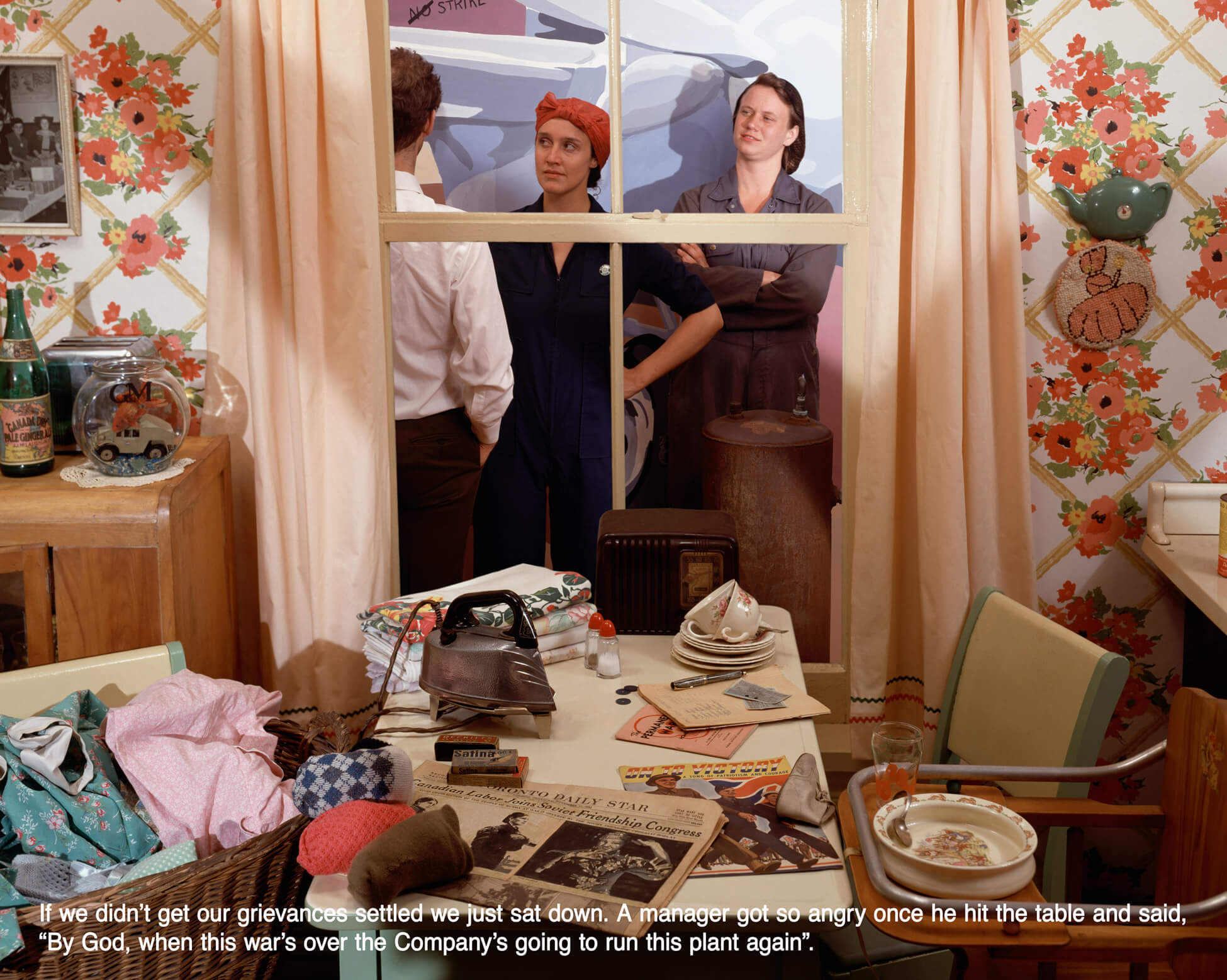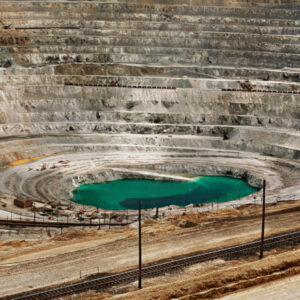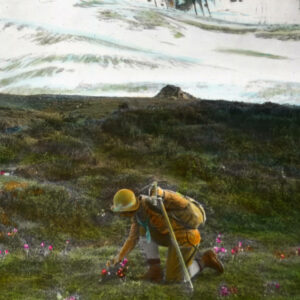Carole Condé (b.1940, Hamilton, Ontario) and Karl Beveridge (b.1945, Ottawa)

Art is Political, 1975
Nine-part black and white photo series
© Carole Condé and Karl Beveridge / CARCC Ottawa 2023
In a panel from a black and white photo series by Carole Condé (b.1940) and Karl Beveridge (b.1945), a man and woman are theatrically lit from above and captured while dancing with abandon. Not until the panel is shown in the context of eight others in the series do you see that the white stripe above the man’s body is the letter I and that the panels together spell out “ART IS POLITICAL,” an apt summary of Condé and Beveridge’s entire oeuvre. The two artists, who have been working together since 1969, have played a pivotal role in developing socially engaged photography in Canada.
Both originally from Ontario, Condé and Beveridge were based in New York from 1969 to 1977, and there they engaged in the emerging Conceptual art movement and political activism. This collision of interests resulted in the artists mashing up these two commitments together in unexpected ways. Their collaborative exhibition at the Art Gallery of Ontario, It’s Still Privileged Art, 1976, critiqued the commercial and ideological structure of the mainstream art world by documenting its impact on their own lives in a series of banners and silkscreens, and in a book featuring cartoons.

The pair moved back to Toronto in 1977 and have worked in partnership since then. Their collaborative process extends to working with unions and community groups to create carefully staged images that explore labour issues, gender inequality, imperialism, social justice, and, more recently, environmental crises. To create their work, they conduct oral history interviews with community members, explore archives, and use the memories and historical details they uncover to re-enact scenarios for the camera. For Oshawa, A History of Local 222, United Steel Workers of Canada, 1982–84, for instance, Condé and Beveridge visualized forgotten moments in the history of women’s work at the General Motors plant.
Although the duo now employ digital tools, their early work mined the political potential of studio photography. Actors were invited into their studio space, on the top floor of their Toronto home, and collaborated with the artists to produce elaborate tableaux vivants with built sets, costumes, and other historical details. The resulting large-scale photographs often include integrated text or accompanying text panels to provide additional context—here the panels tell the stories of the women represented and the impact of their labour activism on their lives at home and work.
Condé and Beveridge have also been key figures in the effort to create and maintain artist-run centres, such as the Workers Arts and Heritage Centre in Hamilton, Ontario, and they have worked with artists’ unions to secure copyright and compensation for artists in Canada.

 About the Authors
About the Authors
 More Online Art Books
More Online Art Books
 Acknowledgements
Acknowledgements